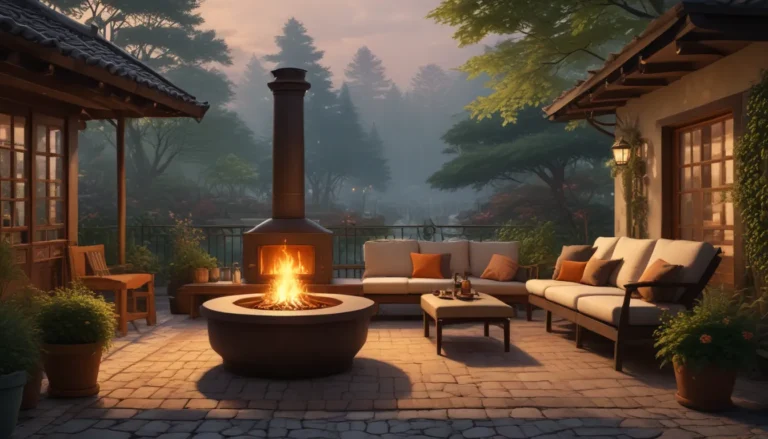Building a Safe Haven: Construct Your Own Bat House with Simple DIY Instructions

Are you interested in providing a safe home for bats in your garden? Building a bat box can be a rewarding experience that invites these flying creatures to take up residence in your backyard. This project requires some basic carpentry skills, but the results are well worth the effort.
Bats need a shelter that is strategically located to provide them with a safe living environment. Consider placing your bat house in an east-facing location to ensure that it receives the right amount of sunlight without being exposed to excessive heat in the afternoon. Additionally, ensure that there is a nearby water source and that the location is secure from local predators.
Once you have constructed your bat house and installed it in the appropriate location, the maintenance requirements are minimal. It’s a simple yet impactful project that can make a difference in supporting local bat populations.
Why Build Your Own DIY Bat House
Building a bat house is a great way to support the local bat population and provide them with a safe place to roost. By constructing your own bat house, you have the opportunity to customize it to suit the needs of the bats in your area. This DIY project can also be a fun and educational experience for the whole family to enjoy.
Required Materials
Before you get started with building your bat house, make sure you have all the necessary materials at hand:
- One (1) 2’ x 4’ x ½” outdoor-grade solid board or plywood (nontoxic)
- One (1) piece of 1” x 2” x 8’ cedar
- One (1) 1” x 4” x 28” cedar or pine board
- Twenty-five (25) 1½” coated deck screws
- One (1) pint dark (brown or black) nontoxic water-based waterproof exterior stain
- One (1) pint water-based exterior primer (optional)
- One (1) quart dark (brown or black) water-based exterior paint or stain
- One (1) tube of nontoxic, paintable exterior latex caulk
Consider the color of the paint or stain for your bat house based on your location. Darker colors are recommended for regions with cooler summers, while lighter hues are suitable for areas with hotter summers to prevent overheating.
Tools
Make sure you have the following tools on hand for building your bat house:
- Battery-powered drill
- Drill bit
- Table or handsaw
- Circular saw (optional)
- Paint brushes
- Caulk gun
- Utility knife
- Sandpaper
- Tape measure/yardstick
- Tarp
- Work gloves
- Goggles/eye protection
It’s important to use the right tools for the job to ensure a successful construction process.
Construction Steps
Follow these steps to build your own DIY bat house:
- Measure and Cut:
- Cut the plywood into three pieces according to the specified dimensions.
-
Double-check your measurements before cutting to avoid any mistakes.
-
Get in the Groove:
- Create grooves on the back plate to serve as landing areas for the bats.
-
Ensure the grooves are evenly spaced and provide enough room for roosting.
-
Stain Interior:
- Apply a dark, water-based stain to the interior surfaces of the back plate and front plates.
-
Avoid using paint on the back plate to prevent filling up the grooves.
-
Cut Furring Strips:
-
Cut the cedar strip into the required lengths for spacers in the construction.
-
Attach Furring Strips:
- Apply caulk to the furring strips and secure them inside the back plate.
-
Ensure the furring strips are positioned correctly to create a sturdy frame.
-
Attach Front Plate:
- Caulk the front plate and attach it to the furring strips.
-
Leave a space between the top and bottom halves for ventilation purposes.
-
Put a Roof on It:
-
Attach the roof piece to the top of the bat house with screws and caulk.
-
Seal Joints:
-
Caulk all exterior joints to prevent drafts and moisture from entering the bat house.
-
Drill and Secure:
-
Drill holes on the front plate and secure the structure with screws.
-
Paint Exterior:
- Apply multiple coats of paint or stain to the exterior surfaces for durability.
Once the construction is complete, allow the bat house to dry overnight before mounting it in the desired location.
Hanging and Maintenance
When it comes to hanging your bat house, select a suitable location such as the side of a house or a tall pole. Avoid mounting the bat house on trees to prevent easy access for predators and ensure ample sunlight and ventilation for the bats.
Regular maintenance is essential to ensure the bat house remains in good condition. Inspect the bat house for damage and insect infestations annually during cooler seasons when bats are not active. If no pests are present, cleaning may not be necessary.
If bats have taken up residence in your bat house, avoid disturbing them to prevent them from abandoning the roost. Bats are loyal to their roosting sites, and providing a safe and secure environment encourages them to return year after year.
Now You’re a Bat Landlord!
By building a bat house, you can create a welcoming habitat for bats in your garden. Enjoy the sight of these insect-eating creatures as they patrol the night skies around your home. Remember that attracting bats to your garden may take time, so be patient and let nature take its course.
For those looking for a quicker solution, pre-constructed bat houses are available for purchase online or at local stores. However, building your own bat house allows you to customize it to suit the specific needs of the bats in your area.
With a bit of effort and creativity, you can contribute to supporting local bat populations and enjoy the benefits of natural pest control in your garden.
What Are You Waiting For?
Take the first step towards building a bat house and providing a safe haven for these beneficial creatures in your garden. Whether you choose to construct a bat house from scratch or opt for a pre-made option, the rewards of supporting local wildlife are immeasurable. Start your bat house project today and enjoy the sights and sounds of bats roosting in your backyard!
By following these simple steps, you can build a bat house that provides a safe and comfortable habitat for bats. Whether you’re a beginner or an experienced DIY enthusiast, constructing a bat house is a rewarding project that benefits both wildlife and your garden environment. Start building your bat house today and create a welcoming home for these fascinating creatures in your backyard.





